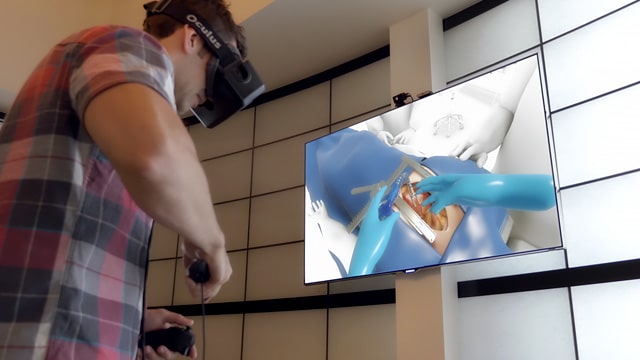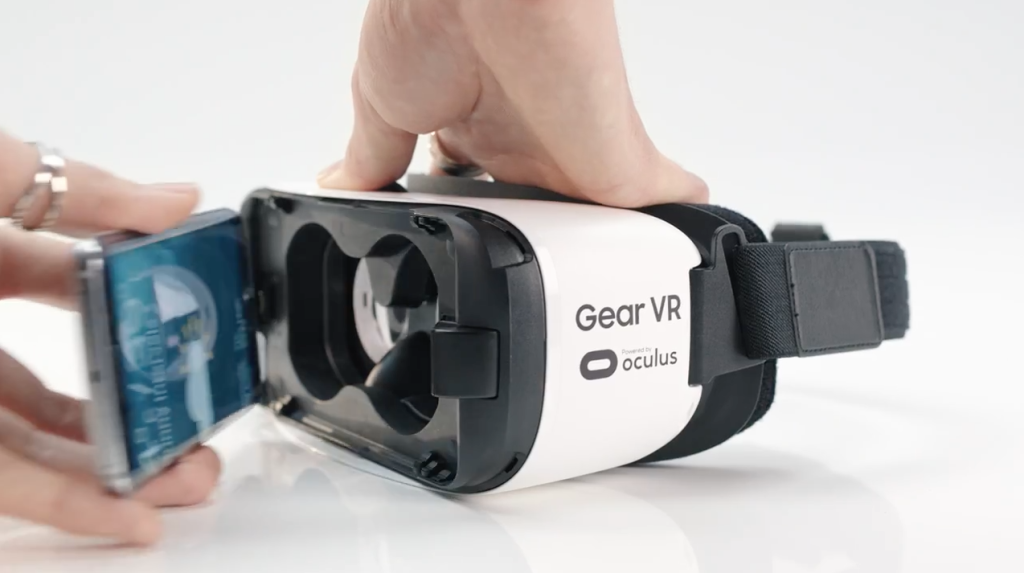“VR isn’t just a technology of the future anymore”
I don’t know anyone with a VR device. In fact, VR only came onto my radar recently. To me, virtual reality has always been an idea for the future. A part of my world circa 2050. But VR isn’t just a technology of the future anymore, it’s actually here. I mean, you can go buy a device off Amazon right now.
If you’re like me and wondering whether you’ve been living under a rock the past few years, here’s an introductory guide to the virtual reality industry. Find out what VR is, what it means for other industries, where you can buy a device, and what’s coming next.
The Basics:
What is VR?
Virtual Reality (VR) is a computer generated environment that is 3 dimensional and interactive. Currently, headsets are the only devices that create VR environments. The headsets completely cover the eyes, including peripherals, forcing users to focus on the generated graphics. The ideal headset (based on current technology) would have a combination of head tracking, motion tracking, and eye-tracking technology. With all three tracking sensors, apps could simulate a user’s real actions in the virtual environment.
What are the impacts of VR?
Ideas considered futuristic will become realistic with virtual reality. Envision yourself casting spells inside a Harry Potter movie. Imagine standing in Times Square as the ball drops. See how furniture fits inside your dream home before you even build. Practice open heart surgeries in a virtual operating room. All of that and more is possible with VR.
The coming of VR will disrupt many industries with the revolutionary capabilities. We will be able to immerse ourselves in fantasy worlds and work with real situations without experiencing negative consequences. The following are just the industries already realizing the possibilities: entertainment, gaming, education, tourism, design, the arts, psychology, medicine, and communications.

As a mobile and web company ourselves, we see the disruption and the opportunities coming. As our society transitions into VR there is a huge landscape for mobile and web applications to be made compatible. The real question is, what happens after? Will mobile and web still be relevant in a VR-focused world? And if so, will it be as simple as iOS or Android?
What can I buy now?
The recent development of better cameras, lenses, processors, chipsets and software has made the new generation of VR the beginning of an era.
Back in 2014, Google released the first VR product for mass consumption: Google Cardboard. The fact that the multi-billion-dollar tech company is actually selling cardboard headsets will surprise you if you haven’t heard of it before. I can’t decide if it’s ingenious or not. Users place their smartphone inside the cardboard box and view the screen through special lenses already installed inside. Cardboard is by far your cheapest introduction into VR (running for about $15) and fortunately for Apple lovers, Cardboard is compatible with iOS as well as Android.

Since Google released this affordable option, new devices have escalated in sophistication and price. Corporations and startups alike built headsets, cameras, wands, sensors, remotes, and more to really develop an industry – not just a one-time product.
In 2015, Samsung partnered with Facebook acquired, Oculus, to release a more sophisticated smartphone based headset. Gear VR is a bargain for $99 but it’s only compatible with recent Samsung phones. A loss for the greater smartphone community.

In March of 2016, Oculus created their own VR headset that requires a PC device instead of a smartphone. The device is more sophisticated as it tracks head movements and generates clearer graphics with a PC connection instead of the smartphone. It’s a whopping $599 though.

A week later, HTC launched their own PC-based headset. HTC Vive is currently the “ultimate VR experience” as it allows for “room-scale gameplay”. Tracing your movements as you walk around a room, is only possible via a package of products. Aside from the headset, Vive comes with two 360° motion tracking stations to set up in your room as well as two wireless controllers consisting of 24 sensors that track a user’s haptics. Vive is $799 for all associated products (except the required PC to run apps off of.)

What’s next?
The upcoming release of Sony and Google devices will expand the VR market drastically.
Sony is releasing PlayStation VR this October. The graphics won’t be as nice as Oculus or Vive but it‘s cheaper, still better than a smartphone and more promising for mass adoption. PlayStation VR will be compatible with the PlayStation 4. A device in which, Sony has currently sold over 40 million units of globally. That‘s an incredible market for VR to saturate.
Roughly around the same time, Google will release their more sophisticated smartphone based headset, Google Daydream, after Android Nougat comes out. Daydream will come with a Wii-like remote and feature full access to the Google Play Store. Only phones made to handle the Nougat will be compatible but Samsung, Alcatel, Asus, HC, LG, Xiaomi and ZTE have already confirmed the production of Daydream ready phones.
And we can’t forget Fove. A PC compatible headset that will be the first to include eye-tracking software. The device will hopefully be a formidable player in the VR field.
The companies mentioned are the forerunners of the industry, but many more are following in their steps. Giants like Amazon, Microsoft, IBM and more are trying to get their foot in the door.
What’s in store for the future?
As amazing as these devices seem, it’s only going to get better. The goal of virtual reality is for users to achieve “total immersion”.
Michael Abrash, Chief Scientist at Oculus, recently spoke about the future of VR. He hopes that in the next 5-10 years, users will be able to feel and manipulate objects, interact with graphical renditions of real life items, and experience real interaction and communications with other people. All via a VR device. Abrash continues to outline the path to a “total immersion” experience – a path still defined by the need for breakthrough research in an array of complex fields.

But the path is there. Experts know what subjects to research and what technical discoveries need to occur in order to create the ideal technology. They just don’t know how to accomplish it. Yet.
My only question is: Where’s Apple in this conversation?
[Last updated August 2016]
Sign up for our Newsletter
Get the latest blog posts and other industry content delivered right to your inbox.
